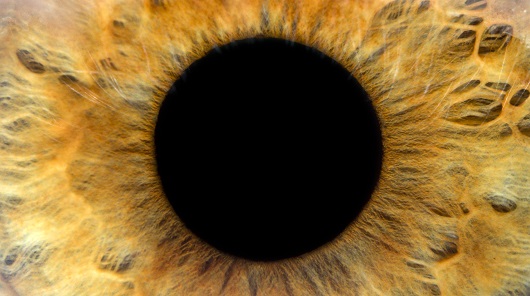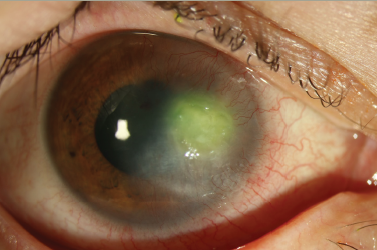I was interested to read the review, “Optical Lens Tinting—A Review of its Functional Mechanism, Efficacy, and Applications” by Jared Raabe, Ashwini Kini, and Andrew Lee, which appeared in US Ophthalmic Review.1
I am the inventor of the FL–41 lens that features in the article. As the authors point out, the original design of the lens was an attempt to reduce the flicker from fluorescent lamps in the days when most were operated from magnetic circuitry. The lamps then had a halophosphate coating, a phosphor that converted the ultraviolet radiation from the gas discharge to long-wavelength light. The coating continued to emit light after excitation by the discharge and, as a result, the light from the lamps flickered less at the long-wavelength end of the visible spectrum than at the short.2 The gas discharge occurred twice with each cycle of the alternating current electricity supply. This (100 Hz) flicker was too fast to be seen, but was shown to be responsible for headaches in office workers in a double-masked study that compared magnetic circuitry with electronic circuitry, which reduced the 100-Hz flicker.3
The FL–41 tint had a low transmission of short-wavelength light and thereby also reduced the flicker. Good and Mortimer used the tint with school children and compared it with a blue tint, which was less effective in reducing headaches.4 The reason for the reduction in headaches from the FL–41 was most probably the school lighting, which used halophosphate fluorescent lamps operated from magnetic circuitry.5
Later, the phosphors in fluorescent lamps were changed for more efficient television phosphors and it was no longer possible to reduce the flicker much by using spectral filters. Later still,
high-frequency electronic ballasts became widespread and the problem of flicker from fluorescent lighting was solved. Unfortunately, it is now re-emerging with light-emitting diode (LED) lighting, but that is another story.
When I had a laboratory in which the fluorescent lamp could be switched between electronic circuitry (flicker-free) and magnetic circuitry (100-Hz flicker), I was asked to see a patient with blepharospasm. She was free of spasm until the lighting was switched to magnetic circuitry, and the spasm then continued when the lighting was switched back to electronic. The FL–41 tint has been shown to reduce blepharospasm, and I therefore wonder whether invisible flicker from fluorescent lighting is partly responsible.6
I have no commercial interest in the FL–41 tint, but it continues to be sold in various guises by several companies on the internet. As Raabe et al. point out, one possible reason is that the tint reduces the stimulation of the intrinsically photosensitive retinal ganglion cells, which have been linked to photophobia and are most sensitive at the short-wavelength end of the visible spectrum where the FL–41 transmission is lowest.
However, I would argue that the evidence for a selective role of melanopsin in photophobia is not strong, at least as regards the photophobia that accompanies migraine. Following the original reports by Noseda, Burstein et al., other papers by these authors have shown less exacerbation of pain during headache from green light not red, and subsequently the same authors have implicated the rods.7–9 In a recent review in Cephalalgia, Noseda et al. postulate “abnormal processing of light by both cone/rod-mediated image-forming and melanopsin non-image-forming visual pathways.”10
So I wonder why the FL–41 continues to be effective in reducing photophobia. Of course, there remains a large number of fluorescent lamps controlled by magnetic ballasts, with television phosphors that fluctuate in brightness and chromaticity at twice the frequency of the electricity supply.2 Even 120-Hz flicker is well within the frequency sensitivity range of the retinal cells (electroretinogram signals attenuate above 200 Hz), so a colored lens might reduce some of the chromaticity fluctuation, and this might reduce fatigue.11
However, I think there may be another explanation relating to cortical hyper-excitability, as in the paper by Huang et al.12 Photophobia in migraine is often conceived as a sensitivity to bright light, but it is so much more. Patients with photophobic migraine have an aversion to flicker, and to patterns, particularly patterns of stripes (those that are epileptogenic in patients with photosensitive epilepsy).13,14 If the photophobia is a symptom of a cortical hyper-excitability, which is common in migraine, then thehyper-excitability is unlikely to be uniform throughout the cortex (even in patients with photosensitive epilepsy, the excitability can involve only neurons with particular orientation selectivity).14–16 The limited knowledge we have of cortical processing of color suggests that in V2 the cells are arranged as per a map of color rather similar to the International Commission on Illumination Uniform Chromaticity Scale (CIE UCS) diagram.17
In recent work, we find that when asked to choose lighting comfortable for reading, most individuals choose a color of light similar to that which they would experience from everyday light sources, both natural (sky blue) and artificial (white or yellow). Patients who experience migraine with aura, on the other hand, choose a light far more saturated in color than is typical of conventional sources of light.18 We hypothesize that the color redistributes excitation in the cortex so as to avoid local patches of hyper-excitability. There are large individual differences in the color chosen, and the choice of color provides little empirical support for melanopsin as a source of photophobia.18
In conclusion, the causes of photophobia in migraine involve not only bright light, but flickering light and stressful patterns. Flickering light and stressful patterns are unnatural, uncomfortable, and a common feature of the modern urban environment.19–22







